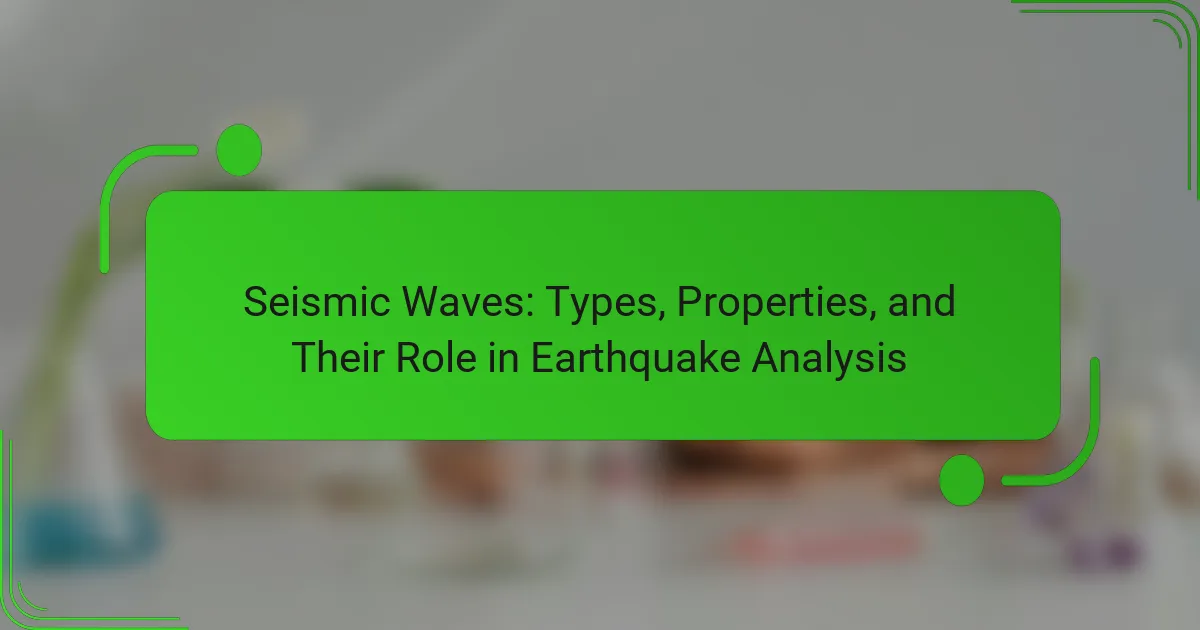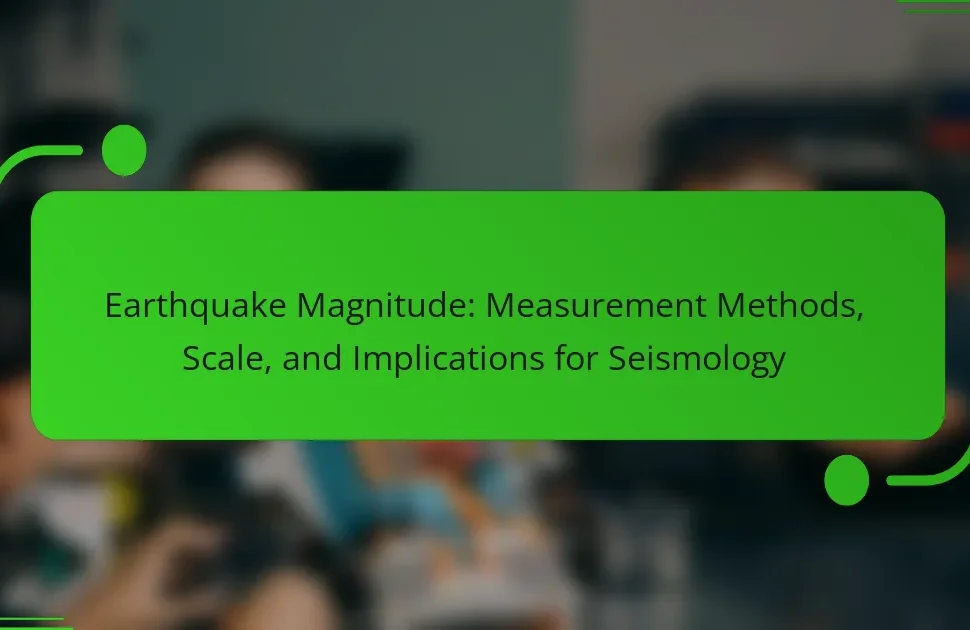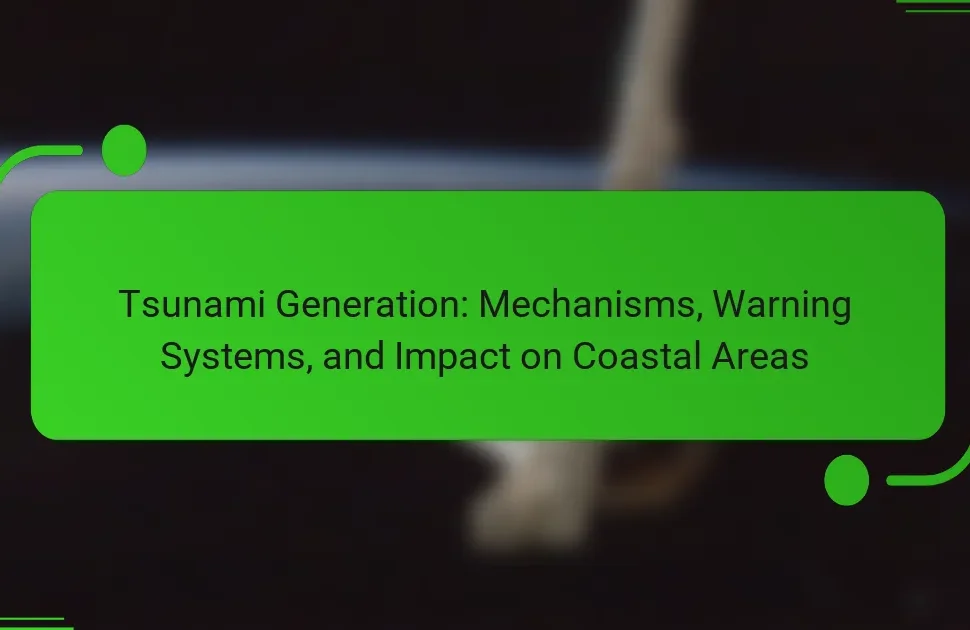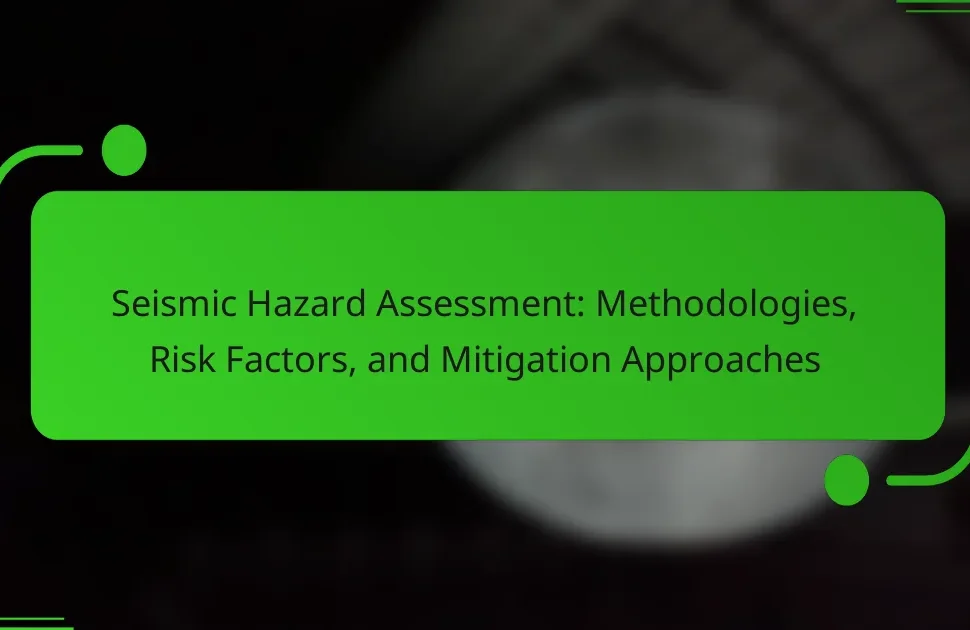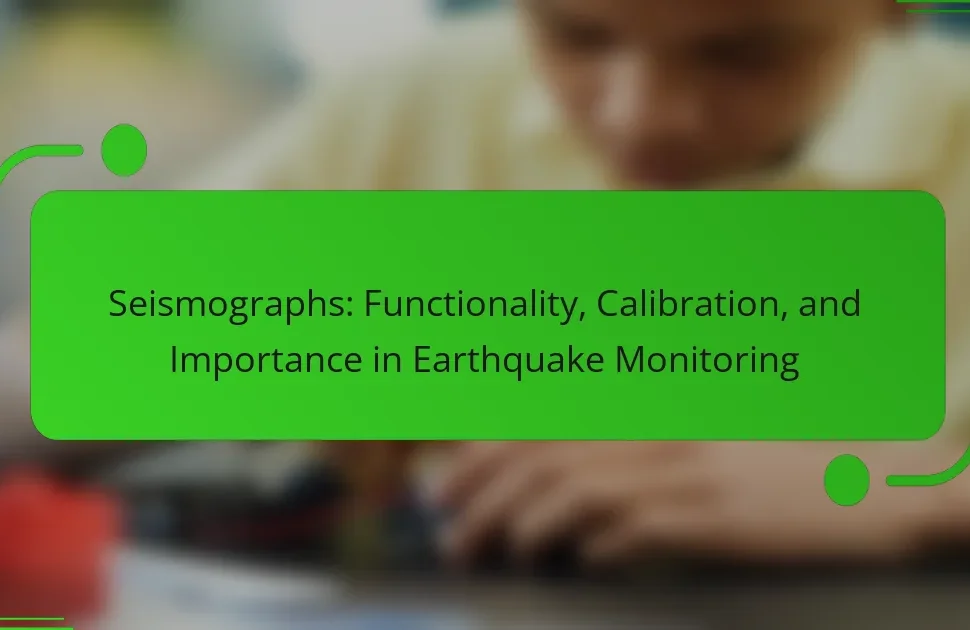Seismic waves are energy waves generated by geological processes, such as earthquakes and volcanic activity, and are classified into two main types: body waves and surface waves. Body waves include primary (P) waves, which are faster and can travel through both solids and liquids, and secondary (S) waves, which are slower and can only move through solids. Surface waves, known for their larger amplitude and longer duration, typically cause more damage during seismic events. Seismometers record these waves, enabling scientists to analyze their characteristics and determine earthquake epicenters, magnitudes, and intensities. This analysis is crucial for seismic hazard assessments and improving preparedness in earthquake-prone regions. Advanced techniques, including seismic instrumentation and data analysis, enhance the understanding of seismic wave behavior and the Earth’s internal structure.
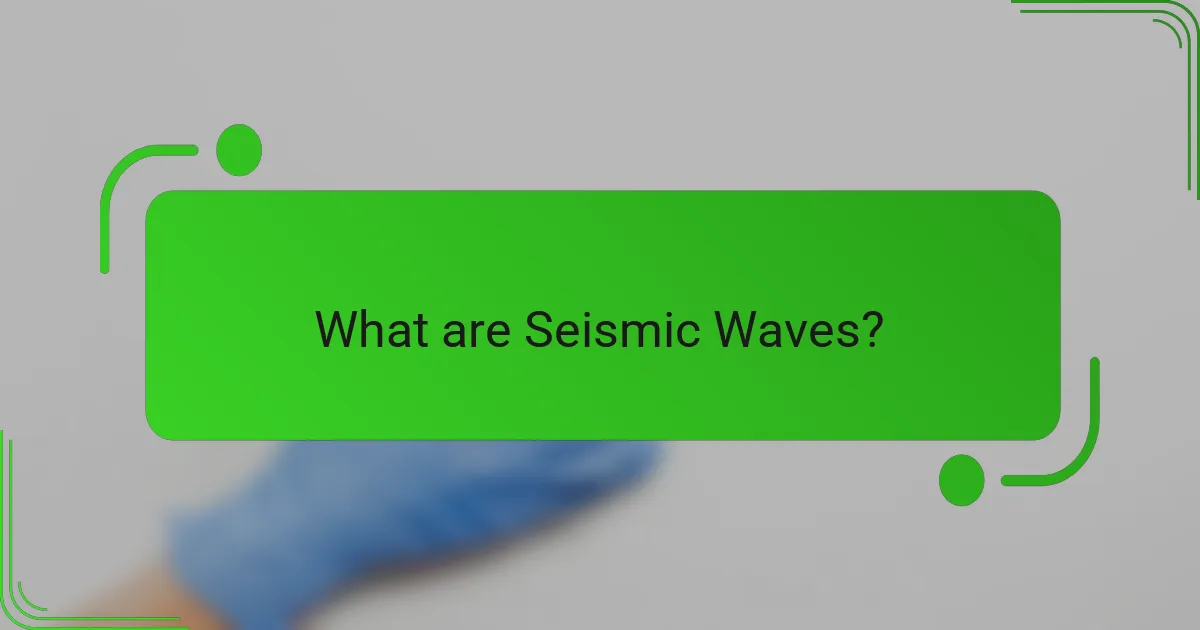
What are Seismic Waves?
Seismic waves are energy waves that travel through the Earth’s layers. They are generated by geological processes, such as earthquakes or volcanic activity. Seismic waves can be classified into two main types: body waves and surface waves. Body waves travel through the Earth’s interior, while surface waves travel along the Earth’s surface.
Body waves are further divided into primary (P) waves and secondary (S) waves. P waves are compressional waves that move faster than S waves. S waves are shear waves that can only travel through solids. Surface waves typically cause more damage during an earthquake due to their larger amplitude and longer duration.
Seismic waves are recorded by instruments called seismometers. These instruments help scientists analyze the waves to understand the Earth’s internal structure and the nature of seismic events.
How are Seismic Waves generated?
Seismic waves are generated primarily by the sudden release of energy in the Earth’s crust. This energy release often occurs during an earthquake. When tectonic plates shift, they create stress along faults. Once the stress exceeds the strength of rocks, it results in a rupture. This rupture generates seismic waves that propagate through the Earth. There are two main types of seismic waves: body waves and surface waves. Body waves travel through the Earth’s interior, while surface waves move along the Earth’s surface. The speed and behavior of these waves depend on the material they traverse. Seismic waves can be detected and measured using seismographs, providing valuable data for earthquake analysis.
What are the primary sources of Seismic Waves?
The primary sources of seismic waves are tectonic plate movements, volcanic activity, and human activities. Tectonic plate movements occur when plates collide, separate, or slide past each other. This interaction generates stress that is released as seismic waves. Volcanic activity also produces seismic waves during eruptions or magma movement. Human activities, such as mining or construction, can create seismic waves through explosions or heavy machinery. These sources are responsible for the majority of seismic wave generation on Earth.
How do tectonic movements contribute to Seismic Wave generation?
Tectonic movements contribute to seismic wave generation through the release of stress accumulated along fault lines. As tectonic plates shift, they can become locked due to friction. This locking stores energy in the Earth’s crust. When the stress exceeds the frictional resistance, the fault slips, releasing the stored energy. This sudden release generates seismic waves that propagate through the Earth. These waves can be detected by seismographs, providing crucial data about the earthquake’s location and magnitude. The 2011 Tōhoku earthquake, for instance, released significant energy due to tectonic plate movement, resulting in powerful seismic waves.
What are the main types of Seismic Waves?
The main types of seismic waves are primary waves (P-waves) and secondary waves (S-waves). P-waves are compressional waves that travel fastest through the Earth. They can move through solids, liquids, and gases. S-waves are shear waves that follow P-waves. They travel slower than P-waves and can only move through solids. These two types of waves are essential for understanding earthquake mechanics. Their distinct behaviors help seismologists determine the location and magnitude of seismic events.
What are P-waves and how do they behave?
P-waves, or primary waves, are a type of seismic wave that travels through the Earth. They are the fastest seismic waves and are the first to be detected by seismographs during an earthquake. P-waves are longitudinal waves, meaning they compress and expand the material they move through. This movement occurs in the same direction as the wave itself. P-waves can travel through solids, liquids, and gases. Their speed varies depending on the material; they travel fastest in solids. This characteristic helps seismologists determine the Earth’s internal structure. When P-waves encounter different materials, they change speed and direction, providing critical information about geological layers.
What are S-waves and what distinguishes them from P-waves?
S-waves, or secondary waves, are a type of seismic wave that move through the Earth during an earthquake. They are characterized by their transverse motion, meaning they oscillate perpendicular to the direction of wave propagation. S-waves can only travel through solid materials, unlike P-waves. P-waves, or primary waves, are compressional waves that move in the same direction as the wave propagation. P-waves can travel through both solids and liquids. The key distinction is that S-waves are slower than P-waves. S-waves typically arrive after P-waves during an earthquake, which is why they are detected second. This difference in speed is crucial for seismologists in determining the location and magnitude of earthquakes.
What are surface waves and why are they significant?
Surface waves are seismic waves that travel along the Earth’s surface. They are significant because they typically cause the most damage during an earthquake. Unlike body waves, which move through the Earth’s interior, surface waves can produce strong ground motion. There are two main types of surface waves: Love waves and Rayleigh waves. Love waves move horizontally, while Rayleigh waves create an elliptical motion. Studies show that surface waves account for most of the energy released during an earthquake. Their impact is crucial for understanding earthquake behavior and assessing potential damage.
What properties define Seismic Waves?
Seismic waves are defined by their properties of speed, frequency, amplitude, and type. Speed refers to how fast the waves travel through different geological materials. Frequency indicates the number of wave cycles that occur in a given time period. Amplitude measures the height of the wave, which correlates with the energy released during an earthquake. Seismic waves are categorized into two main types: body waves and surface waves. Body waves include P-waves, which are primary waves that travel fastest, and S-waves, which are secondary waves that move slower. Surface waves travel along the Earth’s surface and usually cause the most damage during an earthquake. These properties are critical for understanding how seismic waves behave and how they can be used in earthquake analysis.
How does wave speed vary among different types of Seismic Waves?
P-waves travel faster than S-waves and surface waves. P-waves, or primary waves, can reach speeds of approximately 6 to 8 km/s in the Earth’s crust. S-waves, or secondary waves, typically travel at about 3 to 4.5 km/s. Surface waves are the slowest, moving at speeds of 2 to 4 km/s. The difference in speed is due to the wave type and the medium they traverse. P-waves are compressional waves, while S-waves are shear waves. Surface waves involve complex motion along the Earth’s surface. The varying speeds affect how quickly seismic energy reaches different locations during an earthquake. This speed variation is crucial for earthquake analysis and understanding seismic impacts.
What is the relationship between amplitude and energy in Seismic Waves?
The relationship between amplitude and energy in seismic waves is direct and proportional. As the amplitude of a seismic wave increases, the energy it carries also increases. This is due to the fact that energy is proportional to the square of the amplitude. For example, if the amplitude doubles, the energy increases by a factor of four. This principle is fundamental in understanding how seismic waves propagate through the Earth. Higher energy levels can lead to more intense shaking during an earthquake. Thus, measuring amplitude provides valuable insights into the potential impact of seismic events.
How do frequency and wavelength affect Seismic Wave characteristics?
Frequency and wavelength significantly influence seismic wave characteristics. Higher frequency waves have shorter wavelengths and can transmit more energy. These waves tend to be more sensitive to small-scale geological features. Conversely, lower frequency waves have longer wavelengths and penetrate deeper into the Earth. They can travel longer distances but may carry less energy. The relationship between frequency and wavelength is described by the wave equation. This equation states that wave speed equals frequency multiplied by wavelength. Therefore, changes in one parameter directly affect the other. Understanding these characteristics aids in interpreting seismic data and assessing earthquake impacts.
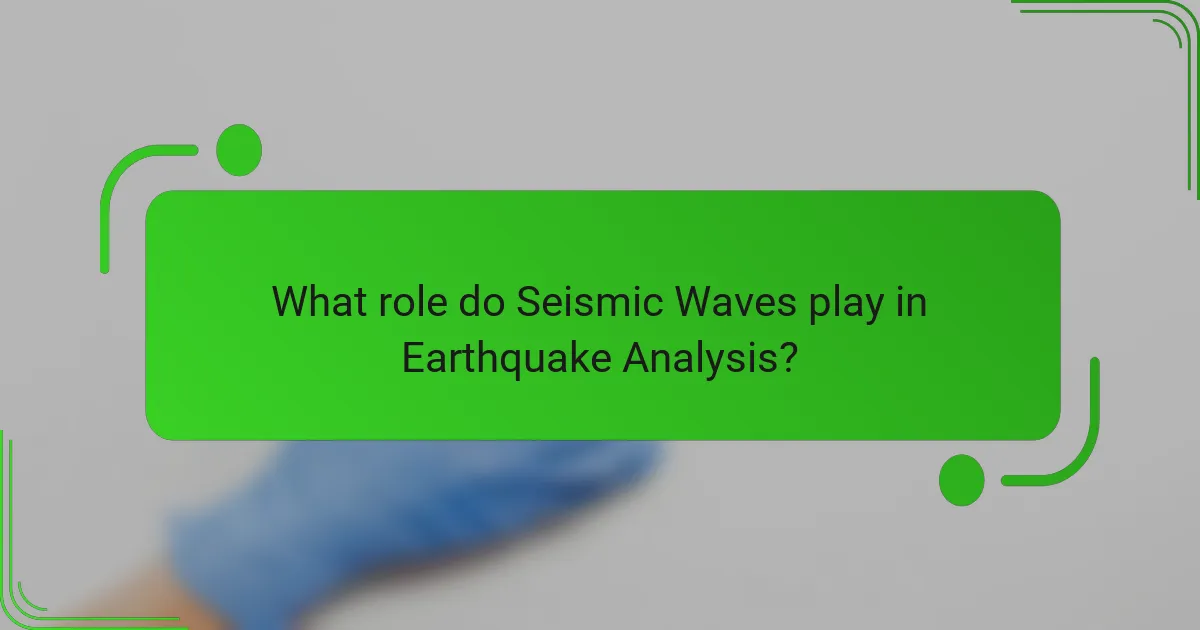
What role do Seismic Waves play in Earthquake Analysis?
Seismic waves are crucial in earthquake analysis as they help in understanding the earthquake’s characteristics. These waves transmit energy released during an earthquake through the Earth’s layers. There are two primary types of seismic waves: P-waves and S-waves. P-waves, or primary waves, travel faster and can move through solids and liquids. S-waves, or secondary waves, are slower and only move through solids.
Seismologists analyze the arrival times of these waves at various seismic stations to determine the earthquake’s epicenter. The difference in arrival times between P-waves and S-waves provides information about the distance to the earthquake. Additionally, the amplitude and frequency of seismic waves reveal the earthquake’s magnitude and intensity.
The data collected from seismic waves is essential for creating seismic hazard assessments and understanding fault lines. This analysis contributes to better preparedness and risk mitigation in earthquake-prone regions.
How are Seismic Waves used to locate earthquakes?
Seismic waves are used to locate earthquakes by measuring their arrival times at various seismic stations. Seismographs detect these waves and record their intensity and duration. There are two main types of seismic waves: primary (P) waves and secondary (S) waves. P waves travel faster than S waves, allowing for the determination of the earthquake’s epicenter. By analyzing the time difference between the arrivals of P and S waves, seismologists can calculate the distance to the earthquake’s source. This method relies on data from at least three different seismic stations to triangulate the exact location. The accuracy of this process is supported by the consistent speed of seismic waves through different geological materials.
What is the process of triangulating earthquake epicenters using Seismic Waves?
Triangulating earthquake epicenters using seismic waves involves three key steps. First, seismic waves generated by an earthquake travel through the Earth. Seismographs at different locations detect these waves. Each seismograph records the arrival times of primary (P) and secondary (S) waves. The difference in arrival times helps determine the distance from each seismograph to the epicenter.
Next, using the calculated distances, circles are drawn around each seismograph location. The radius of each circle corresponds to the distance to the epicenter. The point where all three circles intersect indicates the earthquake’s epicenter.
This method is based on the principle that seismic waves travel at known speeds. For instance, P waves travel faster than S waves. By analyzing the time difference, scientists can accurately pinpoint the location of the earthquake. This triangulation process is essential for understanding seismic activity and improving response efforts.
How do different wave types contribute to understanding earthquake depth?
Different wave types contribute to understanding earthquake depth by providing information on their travel speeds and behaviors through geological materials. Primary waves (P-waves) are compressional waves that travel fastest and can move through solids, liquids, and gases. Secondary waves (S-waves) are shear waves that travel slower than P-waves and only move through solids.
The arrival times of these waves at seismic stations allow seismologists to calculate the distance to the earthquake’s epicenter. By analyzing the difference in arrival times between P-waves and S-waves, scientists can determine the depth of the earthquake’s focus.
For instance, a greater time difference indicates a deeper earthquake. The use of multiple seismic stations enhances accuracy in locating the earthquake’s depth. This method is widely supported in seismic research, establishing a reliable framework for understanding earthquake mechanics.
Why are Seismic Waves important for understanding earthquake magnitude?
Seismic waves are crucial for understanding earthquake magnitude because they provide data on the energy released during an earthquake. These waves travel through the Earth and are detected by seismographs. The amplitude of seismic waves correlates with the earthquake’s energy release. Higher amplitude waves indicate a more powerful earthquake. Additionally, the duration of seismic waves can help estimate the earthquake’s magnitude. The moment magnitude scale relies on the analysis of seismic waves to quantify the size of an earthquake. Studies show that accurate measurements of seismic waves lead to precise magnitude calculations. This information is vital for assessing the potential impact of an earthquake.
What methods are used to measure the magnitude of earthquakes based on Seismic Waves?
The primary methods used to measure the magnitude of earthquakes based on seismic waves are the Richter scale and the moment magnitude scale (Mw). The Richter scale quantifies the amplitude of seismic waves recorded by seismographs. It provides a logarithmic measure, meaning each whole number increase represents a tenfold increase in wave amplitude.
The moment magnitude scale, on the other hand, takes into account the seismic moment of the earthquake. This scale considers the area of the fault that slipped, the average amount of slip, and the rigidity of the rocks involved. It is more accurate for larger earthquakes.
Both scales rely on data from seismic waves to assess the energy released during an earthquake. Seismologists use these methods to provide a standardized measure of earthquake magnitude, aiding in disaster response and research.
How do Seismic Waves influence the assessment of potential earthquake damage?
Seismic waves directly influence the assessment of potential earthquake damage by providing critical data on ground motion. These waves are generated by the sudden release of energy during an earthquake. Their speed, frequency, and amplitude help engineers evaluate the intensity of shaking in different areas. For instance, P-waves travel faster and are typically less damaging, while S-waves cause more destruction due to their higher amplitude.
Seismographs measure these waves and produce seismic records. These records allow for the analysis of wave patterns and energy distribution. By studying the characteristics of seismic waves, experts can predict structural impacts on buildings and infrastructure. Historical data from past earthquakes also support this assessment process. For example, the 1994 Northridge earthquake demonstrated how wave patterns influenced damage assessments in urban areas.
Ultimately, understanding seismic waves is essential for developing effective building codes and safety measures. This knowledge helps mitigate the risks associated with future earthquakes.

How can we effectively study and analyze Seismic Waves?
To effectively study and analyze seismic waves, researchers utilize various methods including seismic instrumentation and data analysis techniques. Seismographs are essential tools that record ground motion during seismic events. These instruments capture different types of seismic waves, such as P-waves and S-waves. Data from these recordings are then processed using software to identify wave patterns and characteristics.
Researchers apply techniques like Fourier analysis to transform seismic data into a frequency domain. This helps in understanding the wave’s behavior and properties. Advanced modeling techniques simulate seismic wave propagation through different geological structures. These models provide insights into how seismic waves interact with various materials.
Field studies also play a crucial role. They involve deploying sensors in specific locations to gather real-time data during seismic events. This data is then analyzed to improve the understanding of wave behavior in different environments. Collaborative efforts among seismologists worldwide enhance the accuracy of seismic wave studies.
By combining these methods, researchers can effectively analyze seismic waves, leading to better earthquake prediction and understanding of Earth’s internal structure.
What tools and technologies are used in Seismic Wave analysis?
Seismic wave analysis utilizes various tools and technologies. Seismometers are primary devices that detect ground motion. They measure the amplitude and frequency of seismic waves. Accelerographs are also used to capture rapid ground movements during an earthquake.
Geophones convert ground motion into electrical signals for analysis. Data acquisition systems collect and process the signals from these instruments. Advanced software, such as seismic interpretation and modeling tools, helps analyze the collected data.
Additionally, Global Positioning System (GPS) technology monitors ground displacement over time. Remote sensing technologies provide insights into surface changes due to seismic activity. These tools and technologies are essential for understanding seismic events and assessing risks associated with earthquakes.
How do seismographs function in capturing Seismic Waves?
Seismographs capture seismic waves by detecting ground motion. They consist of a mass suspended on a spring, which remains stationary while the ground moves. When seismic waves pass through the ground, they cause the base of the seismograph to shake. This motion creates relative movement between the mass and the base. The seismograph records this movement as a trace on a rotating drum or digital medium. The recorded data shows the amplitude and frequency of the seismic waves. This information helps scientists analyze the strength and duration of earthquakes. Seismographs are essential tools in earthquake monitoring and research.
What advancements in technology have improved Seismic Wave analysis?
Advancements in technology have significantly improved Seismic Wave analysis. Enhanced computational power allows for more complex modeling of seismic events. High-resolution sensors provide more accurate data collection. Advanced algorithms improve the interpretation of seismic data. Machine learning techniques enable faster processing of large datasets. Real-time data transmission enhances monitoring capabilities during seismic events. Improved visualization software aids in better understanding of seismic wave behavior. These advancements lead to more effective earthquake preparedness and response strategies.
What best practices should be followed when analyzing Seismic Waves?
Use proper instrumentation for accurate data collection. High-quality seismographs ensure precise measurements of seismic waves. Regular calibration of equipment is essential to maintain accuracy. Analyze data using advanced software for effective interpretation. Visualization tools can help in understanding complex waveforms. Correlate seismic data with geological information for contextual analysis. Employ multiple data sources to validate findings. Continuous monitoring enhances the understanding of seismic activities over time.
How can researchers ensure accurate data collection in Seismic studies?
Researchers can ensure accurate data collection in seismic studies by implementing precise measurement techniques. They should utilize high-quality seismic sensors to capture data with minimal noise. Regular calibration of equipment is essential for maintaining measurement accuracy. Researchers must also follow standardized protocols for data collection and analysis. This includes consistent deployment of sensors in various environmental conditions. Data validation through cross-referencing with multiple sources enhances reliability. Additionally, employing advanced software for data processing can improve interpretation accuracy. Studies have shown that adherence to these practices significantly reduces errors in seismic data collection.
What common challenges arise in Seismic Wave analysis and how can they be addressed?
Common challenges in seismic wave analysis include data quality issues, interpretation difficulties, and computational limitations. Data quality issues arise from noise interference and equipment calibration errors. To address this, researchers can implement advanced filtering techniques and regular calibration protocols. Interpretation difficulties stem from the complexity of seismic wave propagation and geological variability. This can be mitigated through improved modeling techniques and the use of machine learning for pattern recognition. Computational limitations often occur due to the high volume of data and extensive processing requirements. Solutions include leveraging cloud computing and optimizing algorithms for faster processing.
Seismic waves are energy waves that travel through the Earth’s layers, primarily generated by geological events such as earthquakes and volcanic activity. The article categorizes seismic waves into body waves (P-waves and S-waves) and surface waves, detailing their properties, behaviors, and significance in earthquake analysis. Key topics include the generation of seismic waves, methods for locating earthquakes, and the relationship between wave characteristics and potential damage. The discussion emphasizes the role of seismic waves in understanding earthquake magnitude, depth, and the assessment of seismic risk, along with the tools and technologies used in seismic wave analysis.
